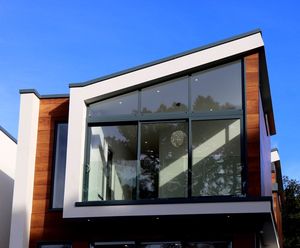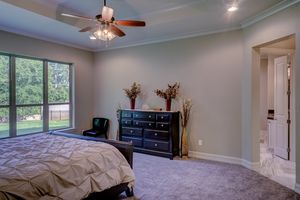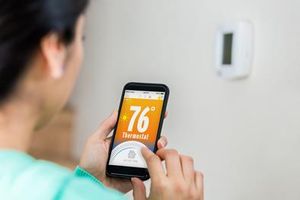A second look at smart, energy-efficient renovation choices that will pay off for the builder and the resident, now and in the future.
Think About Window Orientation and Energy Ratings
 Residential properties waste high amounts of energy through older doors, windows, and skylights, and sometimes even because of the orientation of those openings relative to the sun. For instance, homes with their longest side facing away from the sun tend to be cold and need more heating in winter. The loss of hot or cool air through outdated windows and doors can lead to overworking the HVAC system and result in higher energy bills.
Residential properties waste high amounts of energy through older doors, windows, and skylights, and sometimes even because of the orientation of those openings relative to the sun. For instance, homes with their longest side facing away from the sun tend to be cold and need more heating in winter. The loss of hot or cool air through outdated windows and doors can lead to overworking the HVAC system and result in higher energy bills.
When possible, try to install newer ENERGY STAR certified doors and windows. Larger windows allow for more daylight to enter the home, which can help lower the heating bill in winter.
To further control energy levels, you should consider using weather-stripping and caulking to tightly seal the frame openings. Storm windows and hard window treatments like shutters and blinds will provide another layer of protection against energy loss.
Install Ceiling Fans and Smart Thermostats
 The HVAC system plays a significant role in making a living space comfortable. However, if the system is not managed correctly, it can become inefficient.
The HVAC system plays a significant role in making a living space comfortable. However, if the system is not managed correctly, it can become inefficient.
Installing ceiling fans in upstairs rooms can help your clients and residents remain comfortable without slight air conditioning adjustments. In warm seasons fans are an excellent alternative to running the AC constantly, allowing you to set your thermostat at a higher setting. According to the EPA, raising your AC thermostat setting just 2° can lower your energy cost by 15%. Even in cool months a ceiling fan set in the clockwise direction at low speed can circulate warm air that is concentrated near the ceiling down into the living space, so this is a great multi-season solution.
 If you upgrade your client’s HVAC system with a smart thermostat, more energy saving options become available to them. A programmable thermostat can offer the convenience of not having to manually change the thermostat each time you want to adjust the temperature. Instead, you create customizable programs for your schedule. For example, set it to turn off while you are away at work, and to come back on just before you come home. Some models allow you to remotely set it from a smartphone, in case you need to change the settings while away. Other models actually “learn” your behavior over time and will create a program for you based on your daily activity. All of these thermostats save you money and energy by not running the HVAC system when it’s not needed.
If you upgrade your client’s HVAC system with a smart thermostat, more energy saving options become available to them. A programmable thermostat can offer the convenience of not having to manually change the thermostat each time you want to adjust the temperature. Instead, you create customizable programs for your schedule. For example, set it to turn off while you are away at work, and to come back on just before you come home. Some models allow you to remotely set it from a smartphone, in case you need to change the settings while away. Other models actually “learn” your behavior over time and will create a program for you based on your daily activity. All of these thermostats save you money and energy by not running the HVAC system when it’s not needed.
Landscaping for Energy Efficiency
Many landscapers only focus on the aesthetics of a property. Although this is the primary focus of their skill-set, they can offer a lot more.
Landscaping can also aid in a property's energy savings. The first step is to pick a design that works with the regions climate zone. Native trees and plants work best, and should be used to create shade where possible. Shaded neighborhoods can be up to 6°F cooler than the unshaded ones. Planting trees in “wind breaks” or in a line protecting the home from the prevailing winds can help to cut energy consumption. Drought resistant plants will require less watering, which will also save your clients money.
Any one of these renovation ideas can help your clients get the style they want today, with lasting energy savings they will appreciate for years to come.
Submitted by: Costello Property Management in Las Vegas, a full service real estate company.
